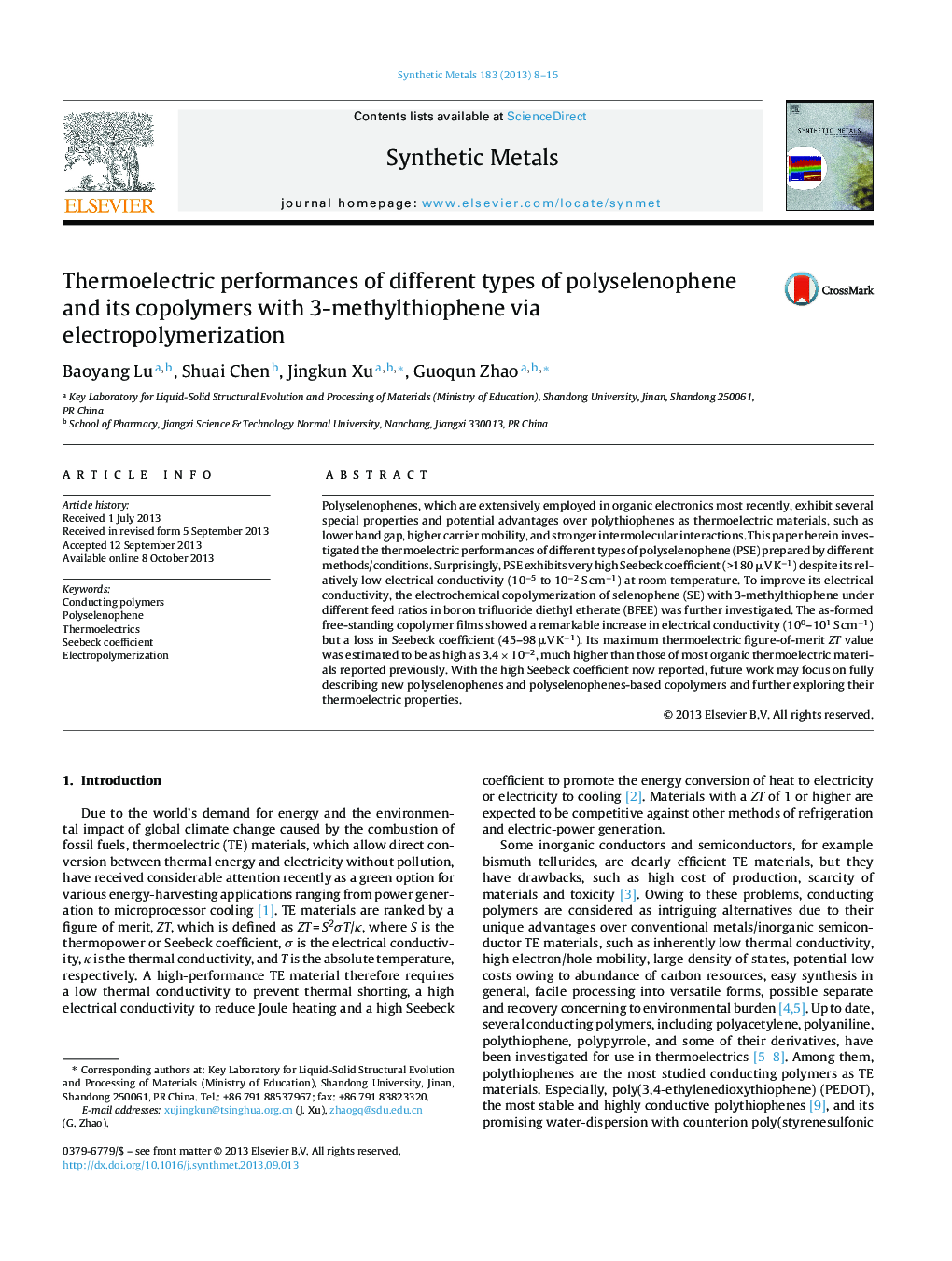| Article ID | Journal | Published Year | Pages | File Type |
|---|---|---|---|---|
| 1441187 | Synthetic Metals | 2013 | 8 Pages |
Polyselenophenes, which are extensively employed in organic electronics most recently, exhibit several special properties and potential advantages over polythiophenes as thermoelectric materials, such as lower band gap, higher carrier mobility, stronger intermolecular interactions, etc. This paper herein investigated the thermoelectric performances of different types of polyselenophene (PSE) prepared by different methods/conditions. Surprisingly, PSE exhibits very high Seebeck coefficient (>180 μV K-1) despite its relatively low electrical conductivity (10-5∼10-2 S cm-1) at room temperature. To improve its electrical conductivity, the electrochemical copolymerization of selenophene (SE) with 3-methylthiophene under different feed ratios in boron trifluoride diethyl etherate (BFEE) was further investigated. The as-formed free-standing copolymer films showed a remarkable increase in electrical conductivity (100∼101 S cm-1) but a loss in Seebeck coefficient (45∼98 μV K-1). Its maximum thermoelectric figure-of-merit ZT value was estimated to be as high as 3.4 × 10-2, much higher than those of the most organic thermoelectric materials reported previously. With the high Seebeck coefficient now reported, future work may focus on fully describing new polyselenophenes and polyselenophenes-based copolymers and further exploring their thermoelectric properties.
Graphical abstractFigure optionsDownload full-size imageDownload as PowerPoint slide
